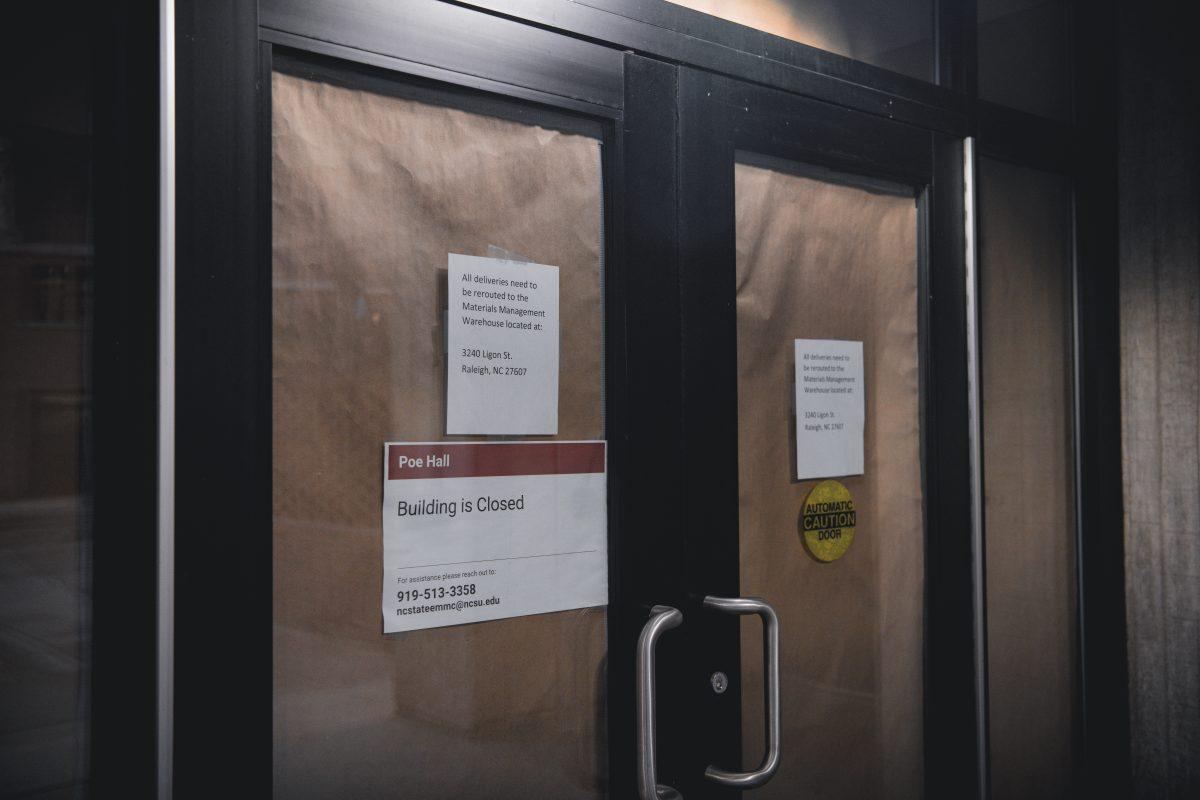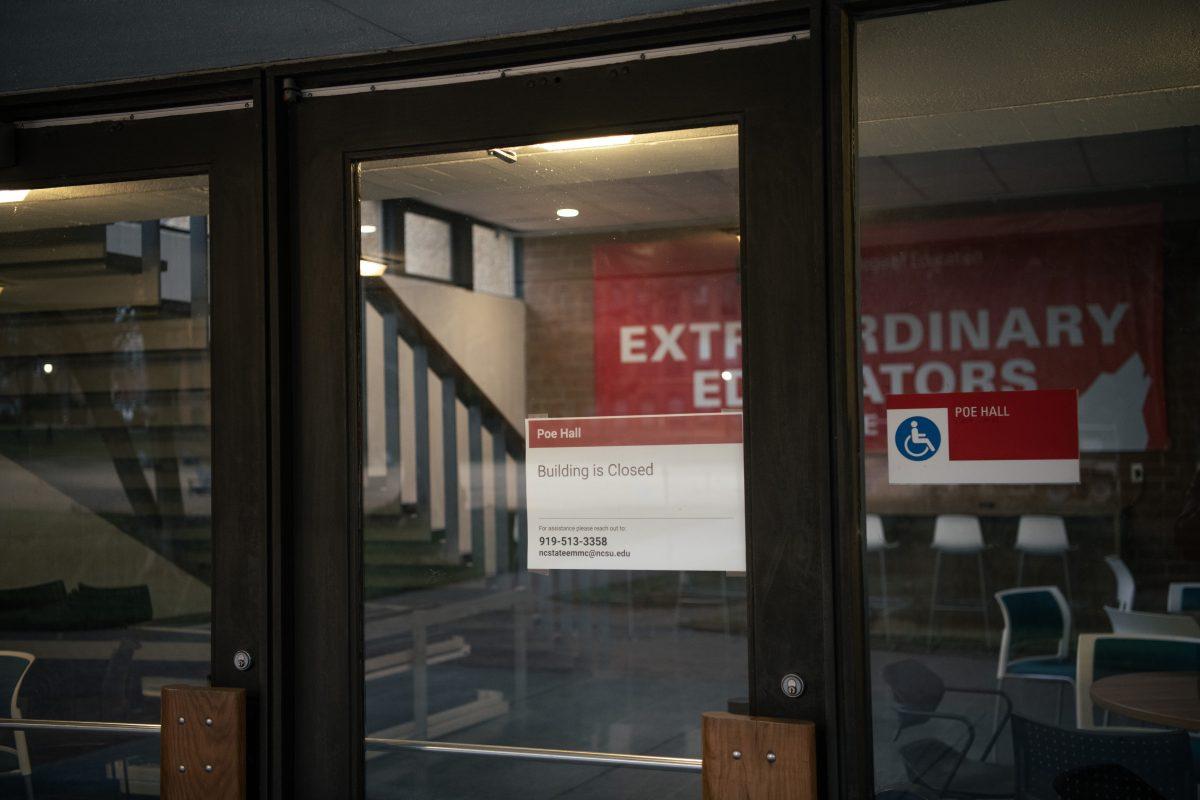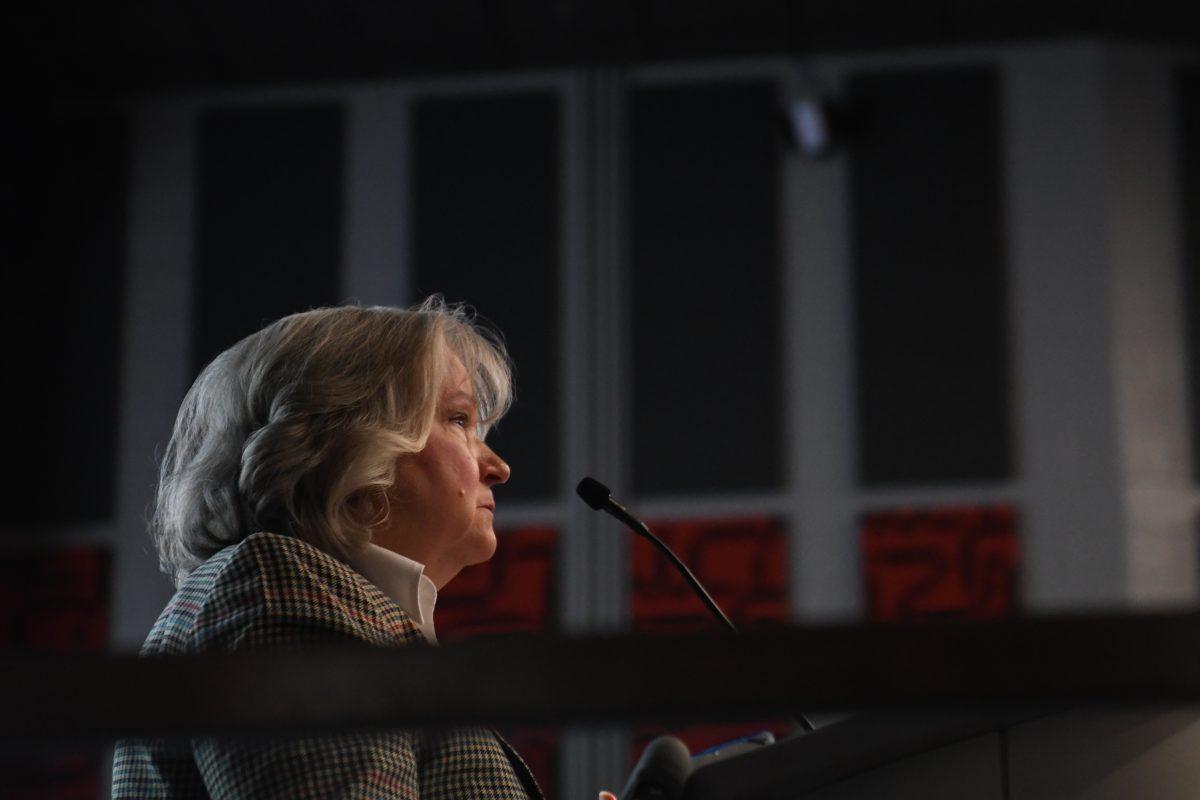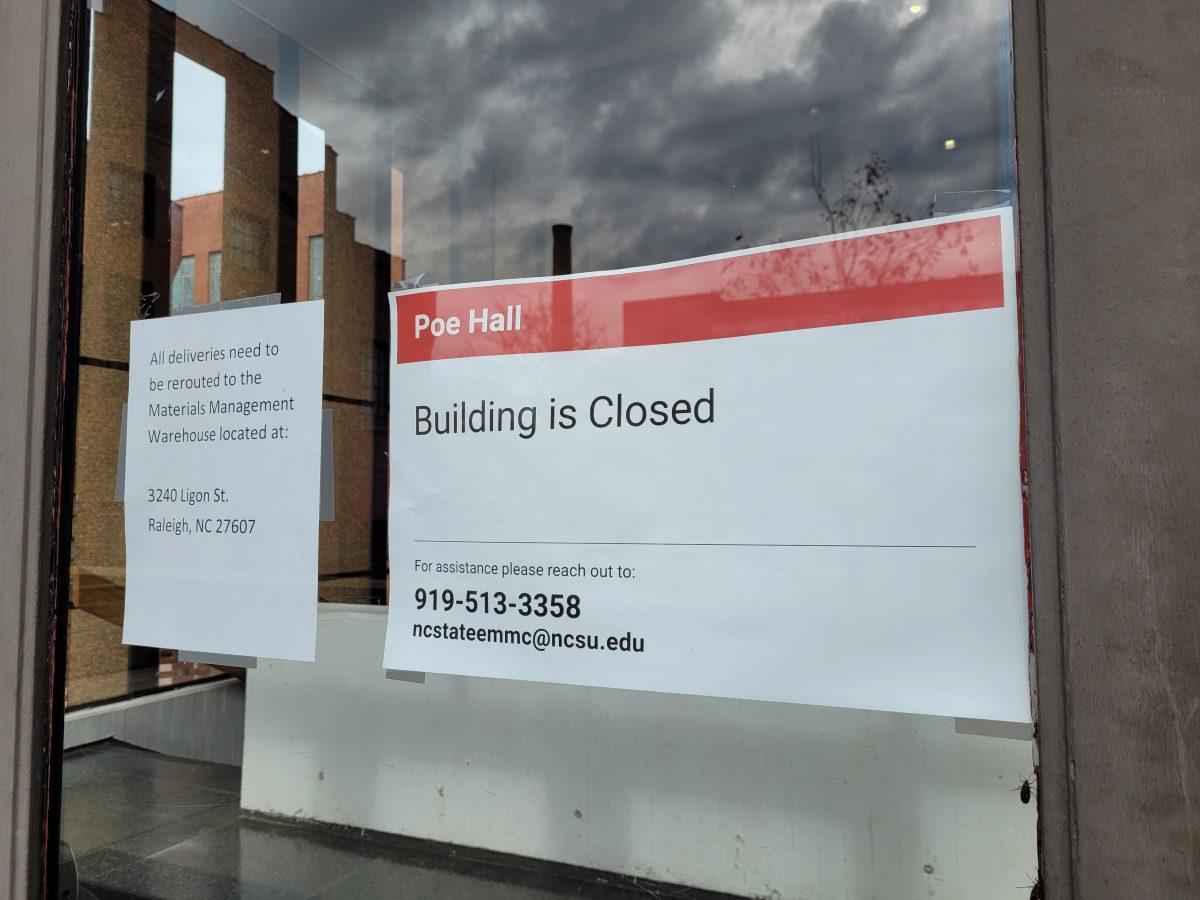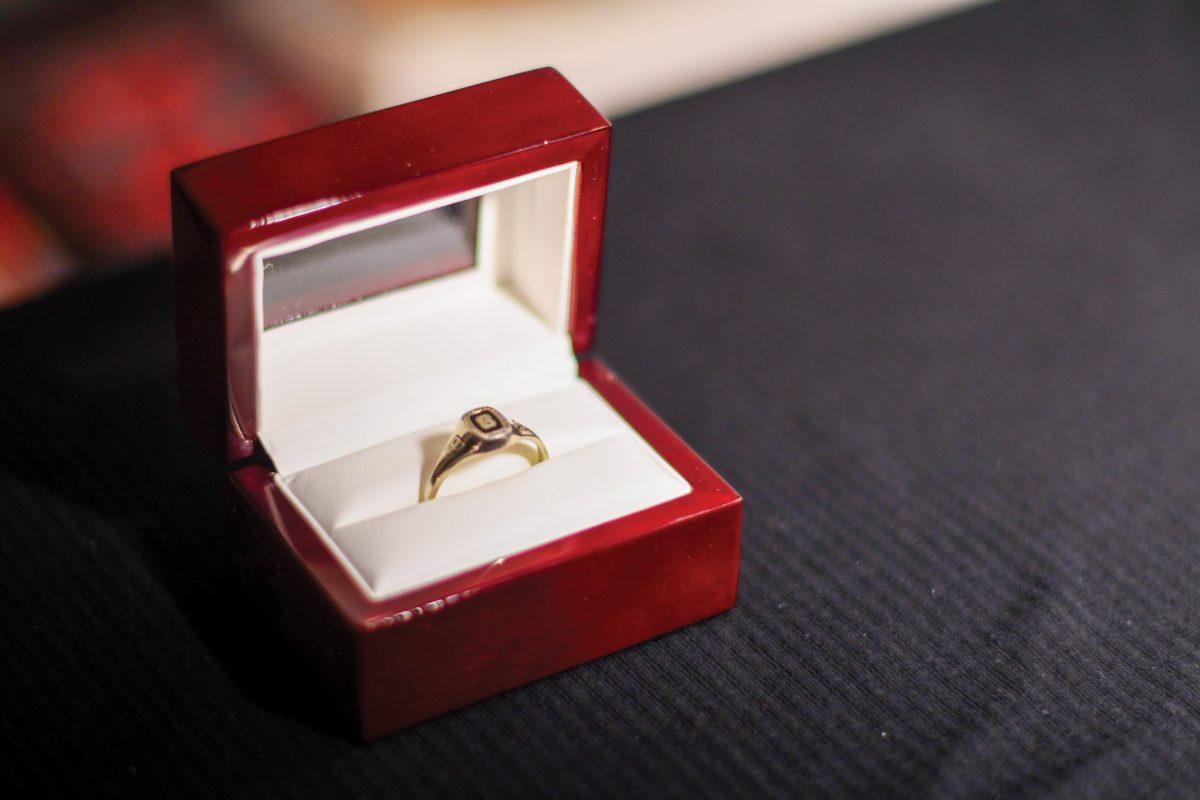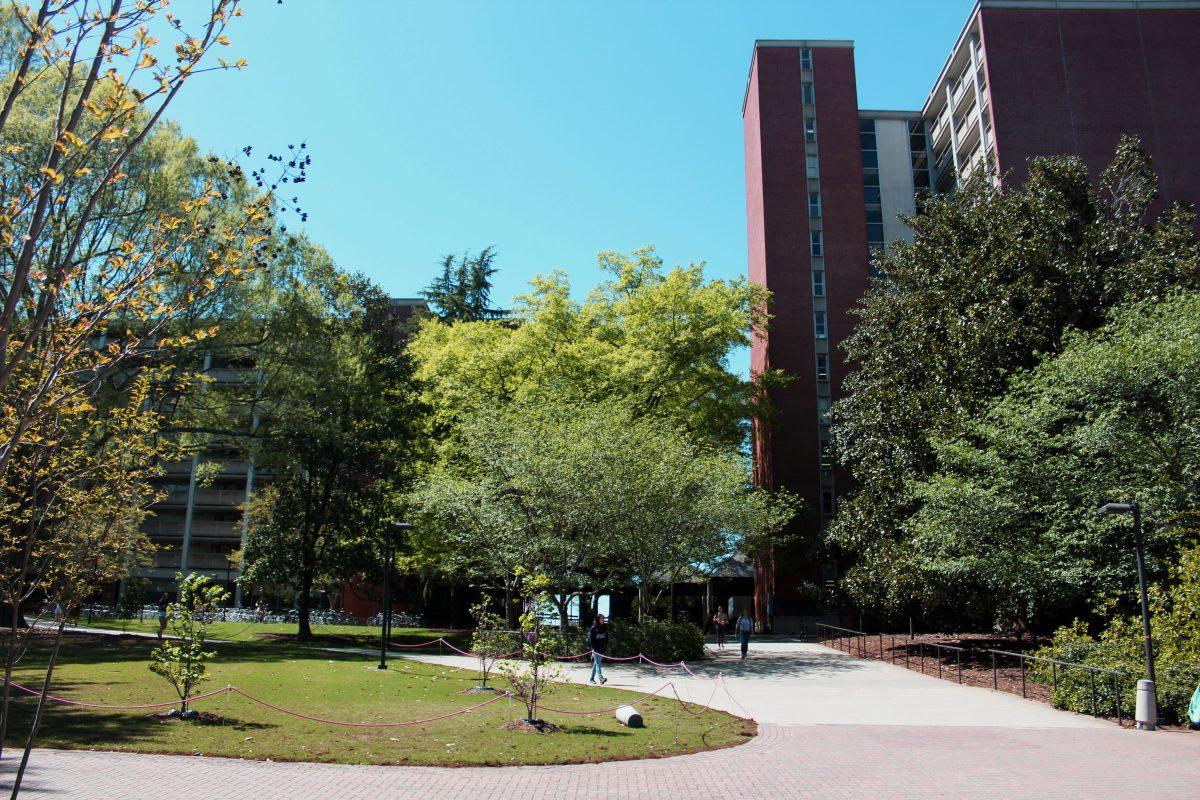NC State found PCB concentrations that exceeded EPA limits in 2018 testing of Poe Hall and D.H. Hill Jr. Library, a report the University released Tuesday reveals.
In a statement shared on the Poe Hall updates website, University officials said NC State hired outside consultants in 2018 to test exterior caulk from both buildings for the presence of PCBs, which are contaminants linked to some types of cancer. The testing was part of renovations that included caulk replacement, which they said is “standard practice when doing renovations on buildings of this age.”
The consultants tested two samples from Poe Hall and six from D.H. Hill Jr. Library’s North Tower. Results from both buildings found PCB concentrations above the EPA limit. The highest PCB concentration, detected in exterior window caulk from D.H. Hill Jr. Library, was 440 times the EPA limit.
A subject matter expert described this 2018 report as a “smoking gun” that shows NC State should have taken more action to address the toxic contaminants when initially detected.
Expert reacts to 2018 report
Warwick Arden, executive vice chancellor and provost, said NC State believes Poe Hall’s PCB contamination is coming from the HVAC system. But Robert Herrick, a retired senior lecturer of industrial hygiene at Harvard University and a leading expert on PCBs, said he thinks this report’s findings indicate otherwise.
“The University seems to be trying to kind of point the finger at that being the source,” Herrick said. “You know, this finding here clearly shows that what you’re getting inside the ventilation system is a result of the contamination that’s on the exterior of the building.”
The 2018 testing found two PCB mixtures — Aroclor-1254 and Aroclor-1268 — in six out of the eight samples, which differ from the PCB mixture found in recent Poe Hall testing, Aroclor-1262. Herrick said building materials weather over time, so this difference is trivial.
“The stuff has been sitting there baking in the sun for 50 years,” Herrick said. “It’s not an exact match. They report what it resembles most closely.”
Studies have shown that PCB-laden exterior caulk can be linked to indoor air contamination, Herrick said, and removing the exterior caulk might not remedy the issue — PCBs can permeate into the surrounding building materials and environment.
In the 2018 report, Matrix Health and Safety Consultants, the consultants NC State hired, said there could be PCBs in other parts of the building that weren’t tested. Mary Cole Pike, University spokesperson, did not confirm that NC State did any further testing in response to the report.
University on testing other buildings
NC State doesn’t routinely test buildings for PCBs, Arden previously told Technician.
“When we have questions about air quality in our building — we do from time to time, in multiple buildings — PCBs are not a common thing to think of,” Arden said. “You’re thinking of asbestos, mold, maybe some other heavy metals, and those are the things that our environmental health people routinely test for.”
NC State tested two samples of Holladay Hall building materials for PCBs in June 2023, Technician first reported. Those samples of caulk and glazing around an exterior window contained PCBs at concentrations below the EPA limit, documents Technician obtained April 24 in a public records request show.
It’s unclear why NC State tested at Holladay Hall. When asked for comment on March 7, Pike didn’t provide the reason for the testing and instead directed Technician to NC State’s public records request portal.
NC State working with federal agencies
The seven-story building that once housed thousands of students, faculty and staff towers over the Court of North Carolina in forlorn glory while it awaits a second phase of environmental testing by NC State’s external consultants, Geosyntec.
Throughout the investigation, Arden said NC State has been working with both state and federal agencies for guidance.
The EPA told Technician that Geosyntec provided a copy of its initial test report to the agency in February, and it met with the consultant to discuss the results.
An EPA spokesperson said it will continue to offer assistance to NC State and Geosyntec as the investigation continues.
NC State has also re-requested that the National Institute for Occupational Safety and Health launch an independent health hazard evaluation of potential hazards and health risks in Poe Hall, a NIOSH spokesperson told Technician.
Over 200 pages of CDC records that Technician obtained Wednesday under the Freedom of Information Act reveal new details about the University’s initial health hazard evaluation request and its subsequent closure.
A memo about the request says NC State requested a health hazard evaluation Oct. 30, nearly three weeks before it closed the building.
Arden said he found out about PCBs in Poe Hall on Nov. 6.
The memo says on Nov. 6, a NIOSH project officer called with the primary requestor, a senior industrial hygienist in NC State’s Environmental Health and Safety, and other members of EHS, who he said were “concerned about potential excess cases of cancer.”
“Over a 20-year period, among 100 to 200 employees, there were 6 cases of cancer; 4 were breast cancer, 1 was lung cancer, and 1 was reported as papillary thyroid carcinoma,” the memo reads. “The requestor did not have a specific exposure of concern at the workplace but said employees with cancer were worried about asbestos, polychlorinated biphenyls, and lead.”
Once the University received additional test results, it made the decision to close the building around Nov. 13, Arden said. NC State retained an outside law firm for representation related to Poe Hall on or about Nov. 17, it said in response to a public records request.
NIOSH experts met with NC State’s general counsel and an attorney from the outside law firm on Nov. 30. In that meeting, the memo says, the Office of General Counsel asked NIOSH to pause its evaluation during the University’s internal investigation.
The NIOSH project officer spoke again with NC State’s general counsel Jan. 18, and following that conversation, NIOSH chose to close the health hazard evaluation.
The close-out memo, dated Jan. 22, noted that the independent consultant investigating Poe Hall is “working with the Environmental Protection Agency to make sure sampling results are correctly interpreted.”
NC State asked NIOSH to open a new health hazard evaluation related to Poe Hall in February after Geosyntec prepared its initial test report, Chancellor Randy Woodson said in a statement Feb. 20.
The NIOSH spokesperson said it’s moving forward with a health hazard evaluation of Poe Hall but does not provide details about ongoing evaluations.
This article was updated March 8 at 1:30 a.m. to include Woodson’s Feb. 20 statement on the new health hazard evaluation.
This article was updated March 8 at 2:30 p.m. to include a link to a study Herrick referenced and a link to the June 2023 invoice.
This article was updated April 24 at 12:21 p.m. with the results of the June 2023 Holladay Hall PCB testing.


